The audio podcast version of this episode encountered a tech glitch that led to an incorrect episode link being supplied with the feed. If you found this page after hitting a 404 error but then figuring it out for yourself, apologies for the inconvenience.

Last week saw the launch of the first episode of Stamps Aren’t Cool, the new podcast in which my wife grills me about my hobby and I try not to go too nerdy in case she kicks me under the desk. It seems to have been received very well. We weren’t sure if anyone would be interested, but the ‘listens’ on podcasting platforms and the views on YouTube have been – hmm, what’s the word for ‘skyrocketing’ if things are going OK but you don’t want to overstate the situation? ‘Paper planing’, perhaps. That’s it. Our stats have been paper-planing.
We’re planning to release episodes fortnightly, but since Episode 1 didn’t contain any actual stamps, we’re sending out Episode 2 ahead of schedule!
In this episode, Celeste’s friends are bemused by her new project, and she has learned enough from living with me to be able to impress (?) them with a little bit of philatelic knowledge already. They were surprised to learn that some of us like to keep the stamps ON the envelopes these days. So in this episode, I set out to explain why.
But trouble lies ahead! Leaving stamps on their envelopes places us in the realm of ‘commercial covers’ and the study of the usage of stamps. That’s the kind of thing I’m really into. We launched this podcast promising that it wouldn’t be too nerdy, so Celeste has her work cut out for her to keep me on the straight and narrow. Can I keep myself under control, yet still convert her to the full appreciation of philatelic usage? Listen and find out!
If you’re reading this post on the blog, or in your emails, and you plan to listen to the podcast, I would suggest bailing from this article now, and returning while you listen, or afterwards. Reading on now might reveal a bunch of spoilers. (Hmmm… what’s the word for ‘spoilers’ if you don’t want to overstate the situation? You’ll find out what I talk about in the podcast, that’s what.) Alternatively, you can scroll to the bottom and watch the YouTube version.
I must admit that I raided my own archives for this one. If you watched my Covid-lockdown-era online presentation to the American Philatelic Society called Collecting Stamps the Hard Way, you’ll find much of this material suspiciously familiar. And if you watch the YouTube version, I will also admit that I spent most of this episode looking at the wrong camera.
To start with, let me illustrate with one example the difference between a stamp on cover, and a used stamp that has been soaked off cover. You could have this used, 40-cent Abel Tasman stamp from Australia’s 1966 Navigators set:
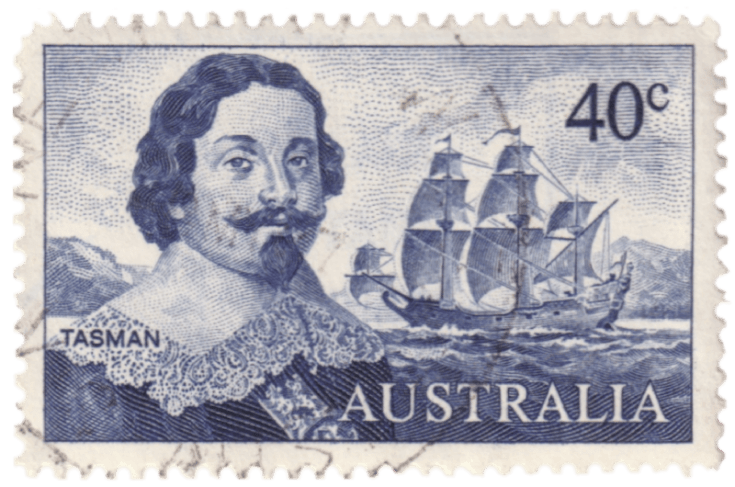
Or, you could retain it in its full glory, paying Registered Air Mail from Australian to America, back in the day. (I have such an affection for these Air Mail envelopes with the coloured edges.)
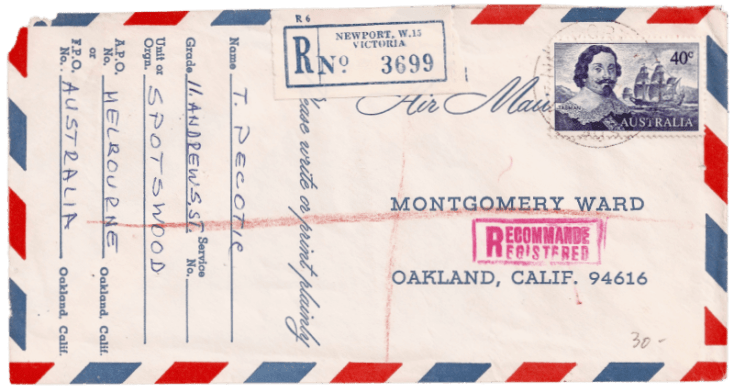
Come on, isn’t the envelope WAY more interesting?
As if the podcast isn’t awesome enough already at this point, I go on to introduce Celeste to this 80-cent 1988 stamp, again from Australia. (What can I say, it’s home base.)

That stamp comes from the Living Together series, featuring humorous cartoon depictions of Australian life. This is the image that I threw into the YouTube video. I have since realised that there’s one stamp missing. Have fun spotting which one, nerds.
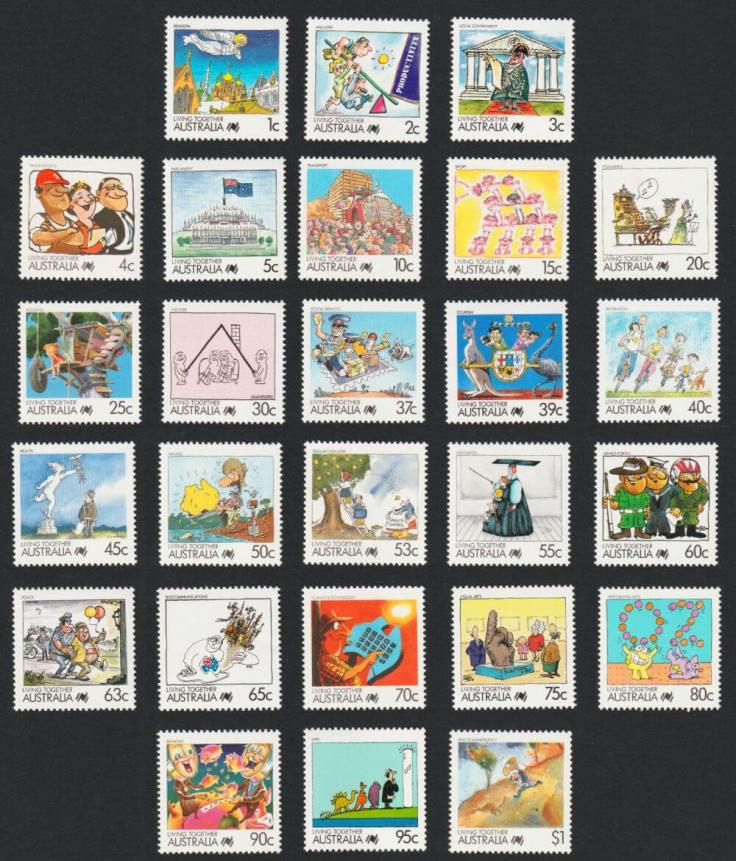
And then I get maybe a little bit too passionate about the many ways in which that 80 cent stamp could have been used. The point I try to make is that some of these uses are scarcer than others. If you cut all the stamps off these covers, you don’t just lose variety and a bit of added story, you’re actually destroying the inherent value of some of the scarcer items.
Here are the covers I mention in the episode, which illustrate some of the many functions in which this 80c stamp served. You can listen to the podcast for the details!
And then the pièce de resistance: a mail redirect form in which a block of seven of the 80c stamps have been used as part of the receipt.
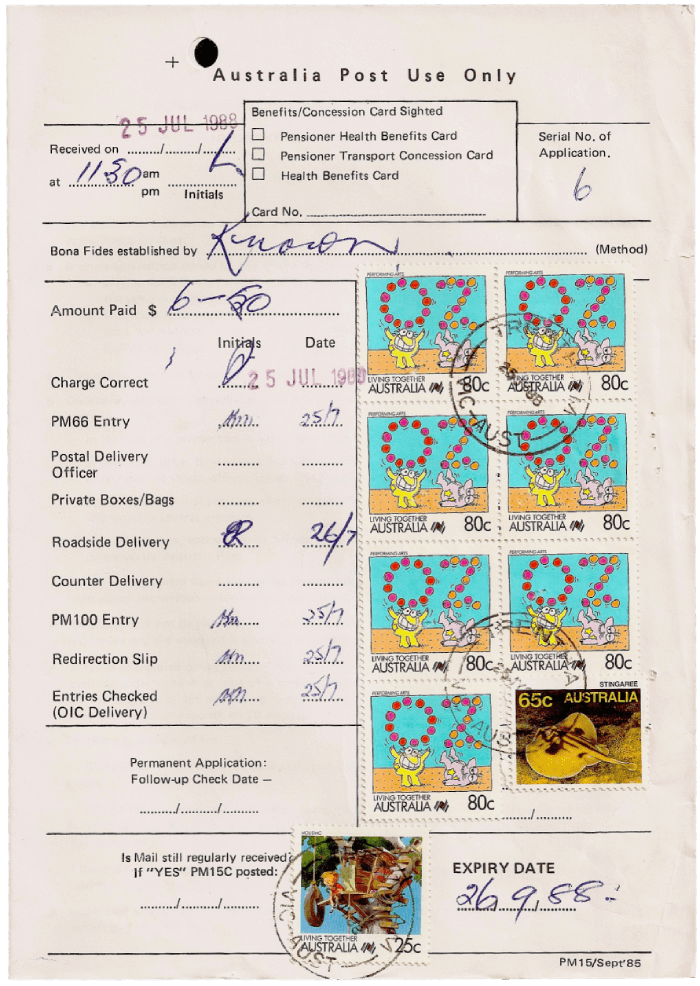
To be clear, I’m talking here about commercial covers, which were mailed through the post in the course of everyday communication. They should not be confused with First Day Covers (like this one) and other contrived philatelic items.

After this little lesson, Celeste asks about covers with letters still in them, and I mention a cover that flew from the USA to Australia, crossing the Atlantic on the Hindenburg. (Something I didn’t mention on the podcast: it was actually the return voyage of the airship’s maiden flight to the US.) Here is that wonderful cover, and the first page of the letter, in which the writer tells of seeing the Hindenburg fly over New York upon its arrival. She even correctly predicts that the letter will go on to have some value in time!
So that’s Episode 2. It’s the first episode where we actually talked about specific philatelic material, so this is the first blog entry that I’ve written up to illustrate that material. I’m already starting to wonder… do I need to do this? Because I could also just say, “Hey… watch the video!’ Which you can do below. I would be interested to hear your thoughts on this.
These early episodes were recorded while we were still ironing out our tech setup, so I apologise for any glitches. I have already observed that I say “That’s right” too often. You might not have noticed, but in the course of editing these shows, I’VE noticed, and now you can suffer with me.
Got any feedback? You can add comments here at the blog, or at the YouTube link below, or via any of my social media pages at Twitter, Instagram, and Facebook.
Thanks for accompanying me on this exciting and possibly overly ambitious journey.
Click here to listen to the podcast.
Don’t forget to subscribe!
To subscribe to the Stamps Aren’t Cool YouTube channel, click here.
And you can watch Episode 2 below!
© Philatelic product images remain the copyright of issuing postal administrations and successor authorities.



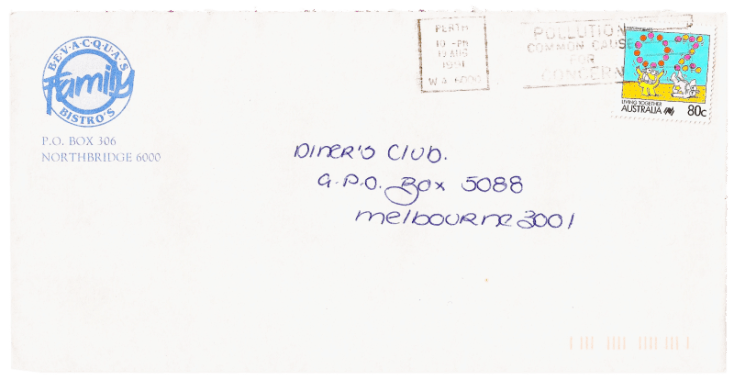


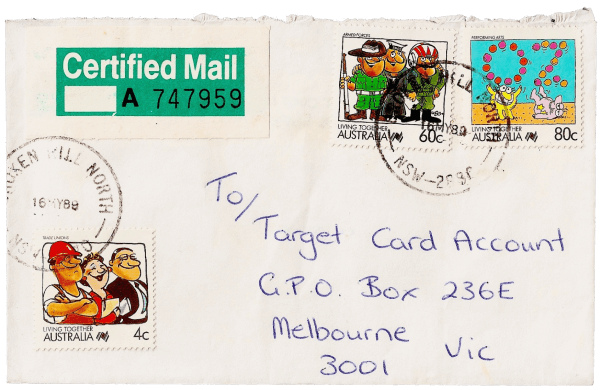
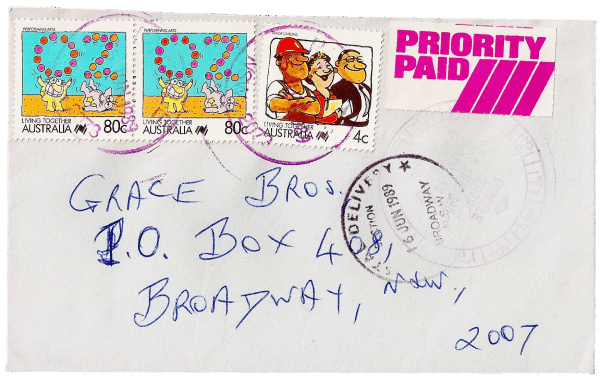
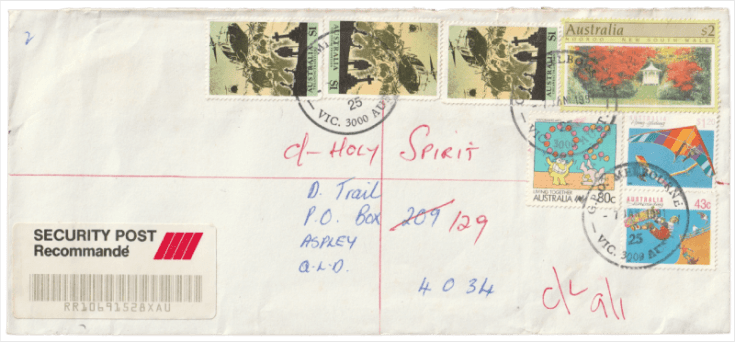


Yes, we usually leave stamps on the envelops but if it is just junk mail, I remove the stamp – usually donate the stamps to a charity I support. I rarely receive mail with interesting envelops or stamps – welcome to the digital age.
LikeLiked by 1 person
That’s too true, which does mean it’s extra special when you find one!
LikeLike
Just listen to your first pod cast and all I can say is thanks for the laugh. At the very least perhaps you will show stamp collecting can be very fun. Best of luck.
LikeLiked by 1 person
Thanks for listening, Charles!
LikeLike